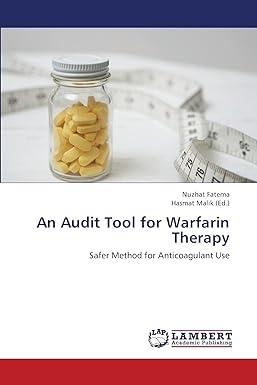Question
On May 1, Diggton Company had a work-in-process inventory of 11,600 units. The units were 80% complete for material and 20% complete for conversion, with
On May 1, Diggton Company had a work-in-process inventory of 11,600 units. The units were 80% complete for material and 20% complete for conversion, with respective costs of $38,000 and $2,170. During the month, 166,000 units were completed and transferred to finished goods. The May 31 ending work-in-process inventory consisted of 11,600 units that were 90% complete with respect to materials and 50% complete with respect to conversion. Costs added during the month were $346,000 for materials and $527,750 for conversion. Required: Using the weighted-average method, calculate: A. Total equivalent units for material and conversion. B. The cost per equivalent unit for material and conversion. (Round your answers to 2 decimal places.) C. The cost transferred to finished goods. (Round your intermediate calculations to 2 decimal places and final answers to nearest whole dollar.) D. The cost of ending work in process. (Round your intermediate calculations to 2 decimal places and final answers to nearest whole dollar.)
On May 1, Diggton Company had a work-in-process inventory of 11,600 units. The units were 80% complete for material and 20% complete for conversion, with respective costs of $38,000 and $2,170. During the month, 166,000 units were completed and transferred to finished goods. The May 31 ending work-in-process inventory consisted of 11,600 units that were 90% complete with respect to materials and 50% complete with respect to conversion. Costs added during the month were $346,000 for materials and $527,750 for conversion. Required: Using the weighted-average method, calculate: A. Total equivalent units for material and conversion. B. The cost per equivalent unit for material and conversion. (Round your answers to 2 decimal places.) C. The cost transferred to finished goods. (Round your intermediate calculations to 2 decimal places and final answers to nearest whole dollar.) D. The cost of ending work in process. (Round your intermediate calculations to 2 decimal places and final answers to nearest whole dollar.)
Step by Step Solution
There are 3 Steps involved in it
Step: 1

Get Instant Access to Expert-Tailored Solutions
See step-by-step solutions with expert insights and AI powered tools for academic success
Step: 2

Step: 3

Ace Your Homework with AI
Get the answers you need in no time with our AI-driven, step-by-step assistance
Get Started


